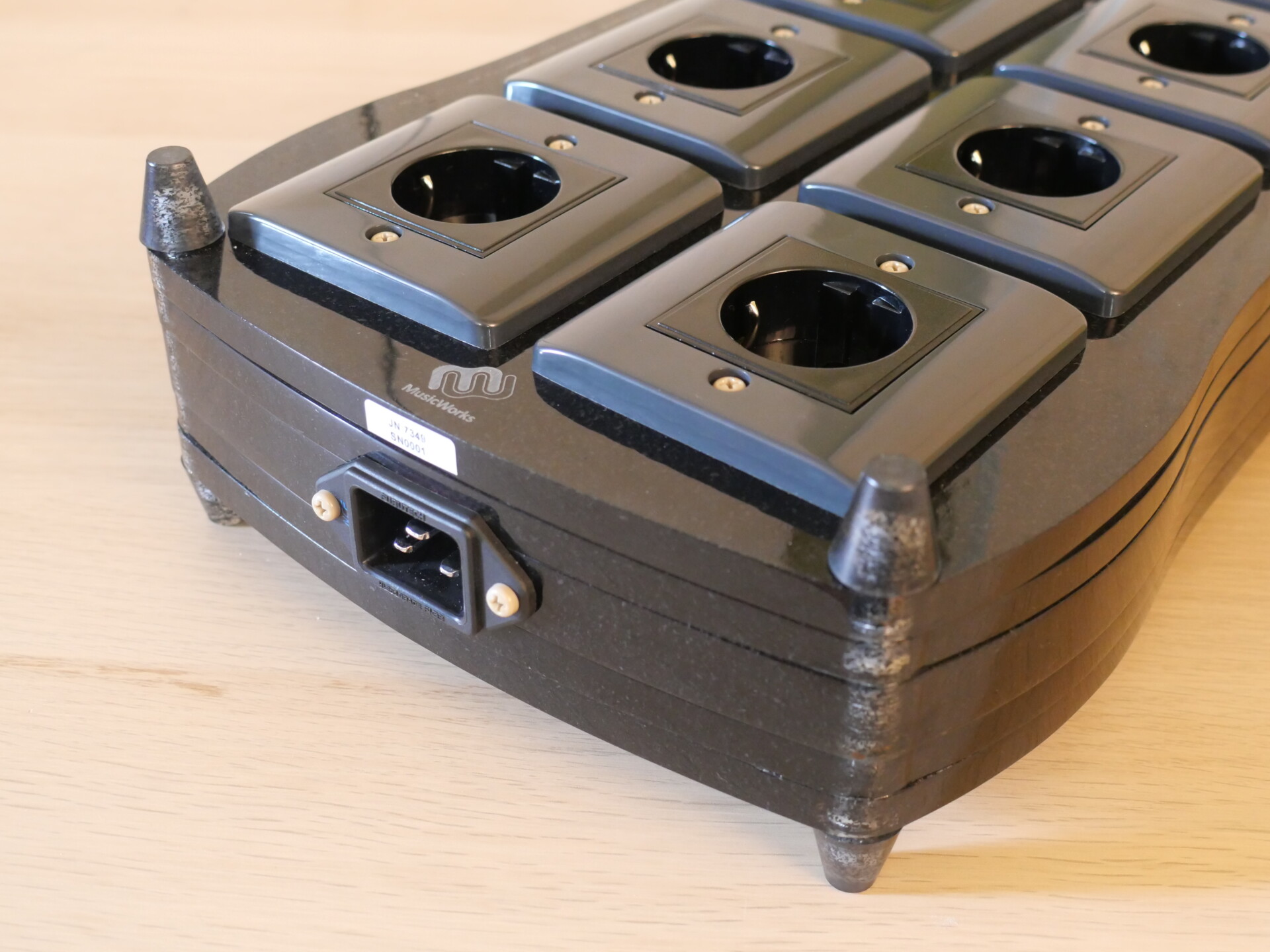The hourglass profile is immediately obvious, which together with the curved ends helps eliminate constant chord dimensions and spreads the unit’s resonant signature. The body of the block is constructed from five layers of Acouplex (an Acrylic/Peek composite, for those who haven’t been paying attention) a thicker, 19mm slab sandwiched between a pair of 10mm plates on each side, clamped in the corners with non-metallic fixings constructed from Acouplex and PEEK parts. These fixings are likely to change from the conical studs you’ll see in the pictures of the prototype unit, introducing a tool tightened solution to meet legal requirements. Aesthetically I’m all in favour of that! But the corner clamping elements do underline just how far MusicWorks are prepared to go to eliminate metallic components from their distribution block. In fact, metal is limited to the cryo-treated conductive elements (wiring and contacts). Even the screws holding the sockets in place are machined from PEEK engineering polymer!

With six or eight sockets on the top-plate, the only other significant feature is the 20A IEC input installed in one end. It’s also possible to specify an external ground terminal connected to the star ground point of the internal wiring harness. A neat, 4mm banana socket, if I was MusicWorks I’d be making that option a standard feature, if only to streamline production and bring the Reflex Ultra blocks into line with standard practice. Of course, if you’ve got a spare socket, you can use that to connect an earth wire via the appropriate AC plug, but modern systems seem to be more and more demanding when it comes to AC connections, so an independent ground socket makes sense, as does its connection directly to the central star.
Beyond that and the price, there’s not a lot to say on the physical side. There’re no active elements, filtering or electrical isolation built into the Reflex Ultra. This is a straightforward, star-grounded, ultra-low impedance distribution block, in the same style as Nordost’s long-standing and well-regarded QB8. It exists to provide as direct an AC feed and as effective an electrical ground as possible, without interference from intervening elements. But it also has something else in common with the QB8: it is designed to minimise the often-overlooked influence of mains-born mechanical vibration on the system’s AC supply and thus the system itself. A six-way block will cost you £3,600, with an eight-way weighing in at £4,750, both prices including 20% UK sales tax – not cheap, but hardly premium prices in today’s power distribution market place. It’s currently available with either UK 13A or Schuko outlets, although the possibilities for a US version are being considered: it’s possible, but a socket needs to be selected and any mechanical adaptation carried out, if necessary.
Now plug the Reflex Ultra in – and plug your system into it – and be prepared for a shock. AC vibration may not be top of mind, but it’s audibly front and centre when it comes to musical reproduction.

